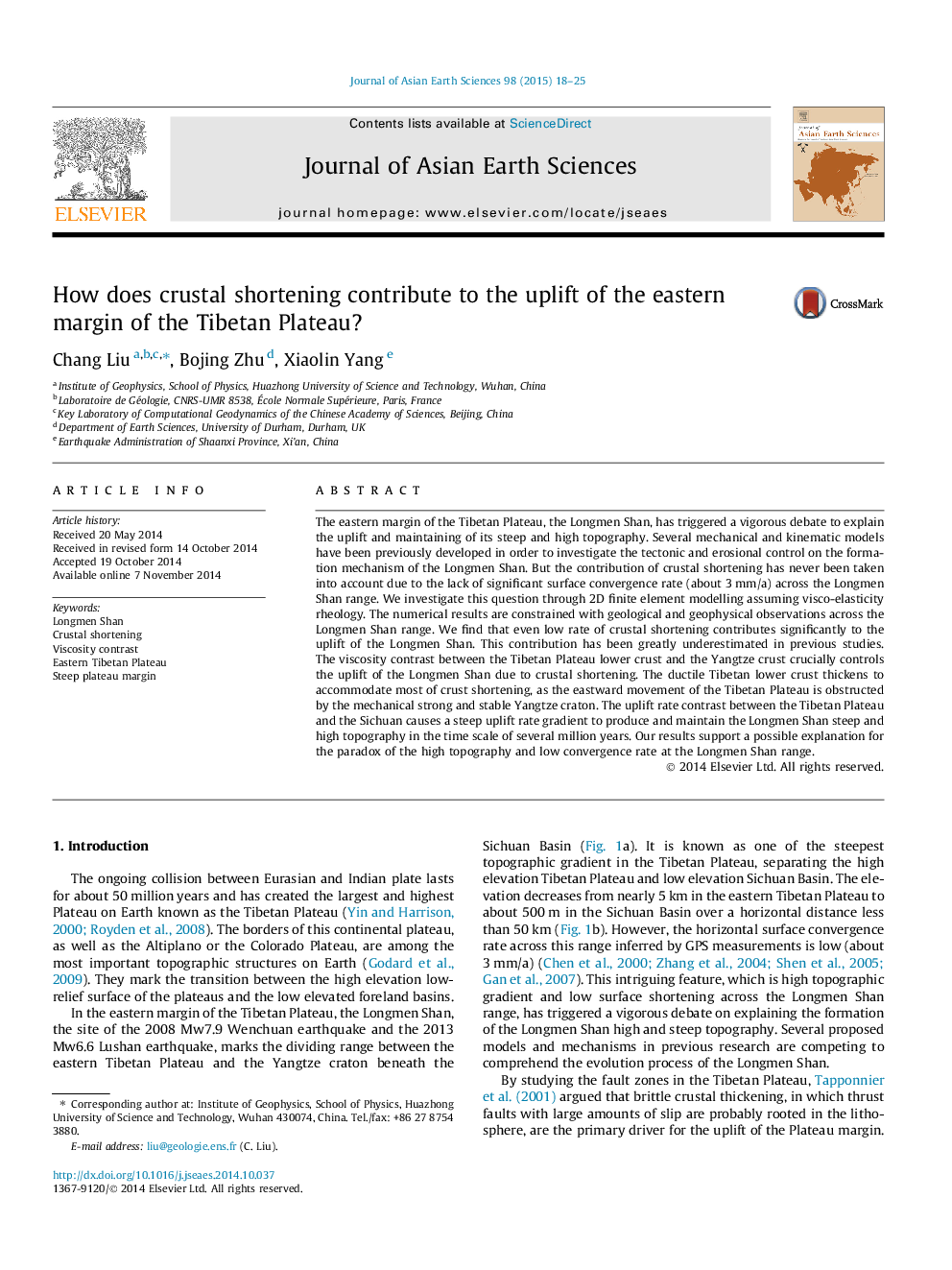| Article ID | Journal | Published Year | Pages | File Type |
|---|---|---|---|---|
| 6444344 | Journal of Asian Earth Sciences | 2015 | 8 Pages |
Abstract
The eastern margin of the Tibetan Plateau, the Longmen Shan, has triggered a vigorous debate to explain the uplift and maintaining of its steep and high topography. Several mechanical and kinematic models have been previously developed in order to investigate the tectonic and erosional control on the formation mechanism of the Longmen Shan. But the contribution of crustal shortening has never been taken into account due to the lack of significant surface convergence rate (about 3Â mm/a) across the Longmen Shan range. We investigate this question through 2D finite element modelling assuming visco-elasticity rheology. The numerical results are constrained with geological and geophysical observations across the Longmen Shan range. We find that even low rate of crustal shortening contributes significantly to the uplift of the Longmen Shan. This contribution has been greatly underestimated in previous studies. The viscosity contrast between the Tibetan Plateau lower crust and the Yangtze crust crucially controls the uplift of the Longmen Shan due to crustal shortening. The ductile Tibetan lower crust thickens to accommodate most of crust shortening, as the eastward movement of the Tibetan Plateau is obstructed by the mechanical strong and stable Yangtze craton. The uplift rate contrast between the Tibetan Plateau and the Sichuan causes a steep uplift rate gradient to produce and maintain the Longmen Shan steep and high topography in the time scale of several million years. Our results support a possible explanation for the paradox of the high topography and low convergence rate at the Longmen Shan range.
Related Topics
Physical Sciences and Engineering
Earth and Planetary Sciences
Geology
Authors
Chang Liu, Bojing Zhu, Xiaolin Yang,
